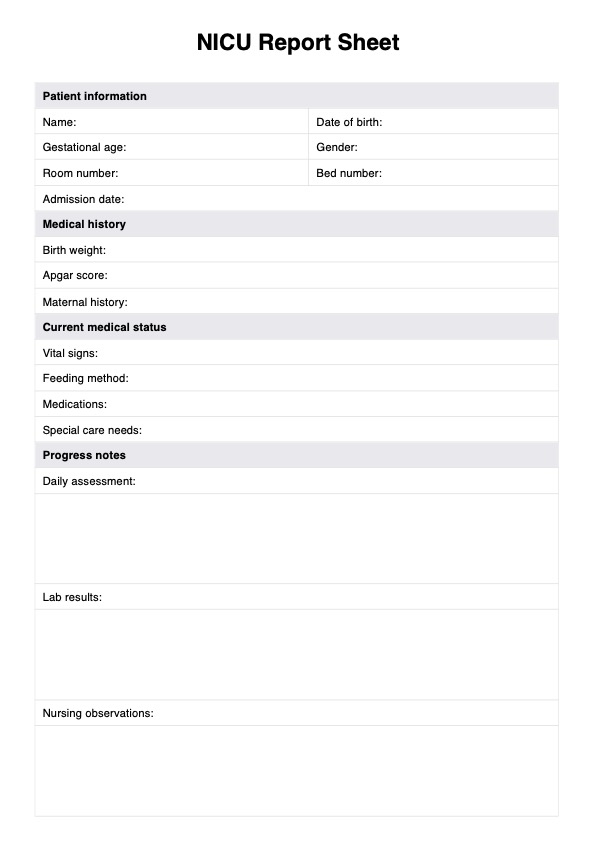Carepatron prioritizes the security and confidentiality of patient data. The platform uses advanced encryption and complies with healthcare privacy regulations to ensure data is protected.

NICU Report Sheet
Discover the ultimate guide to NICU Report Sheets with Carepatron. Enhance neonatal care with our free PDF download and expert tips.
Use Template
NICU Report Sheet Template
Commonly asked questions
Yes, Carepatron allows customization of the NICU Report Sheet to suit the specific needs of your neonatal unit, ensuring that it aligns perfectly with your workflow and patient care protocols.
Absolutely. Carepatron is designed for accessibility across various devices, including smartphones, tablets, and computers, ensuring that healthcare professionals can update and view NICU Report Sheets anytime, anywhere.
EHR and practice management software
Get started for free
*No credit card required
Free
$0/usd
Unlimited clients
Telehealth
1GB of storage
Client portal text
Automated billing and online payments











